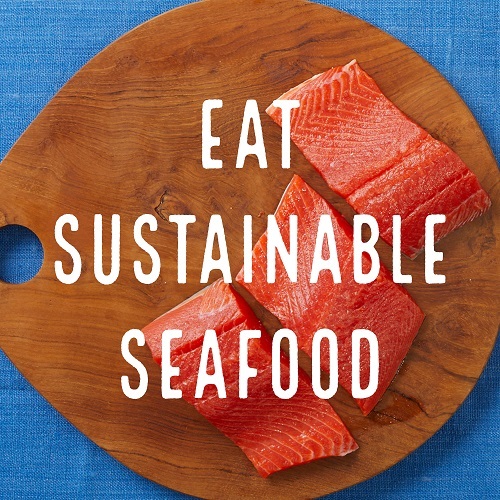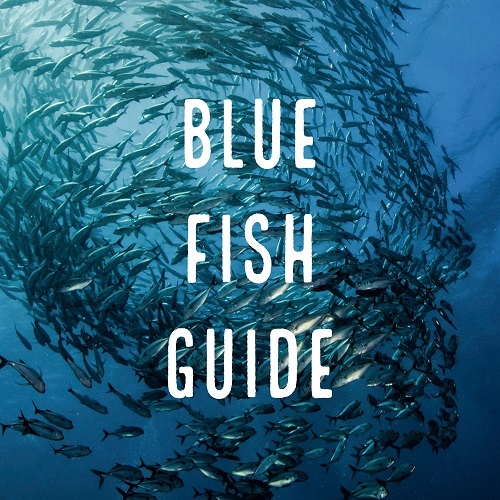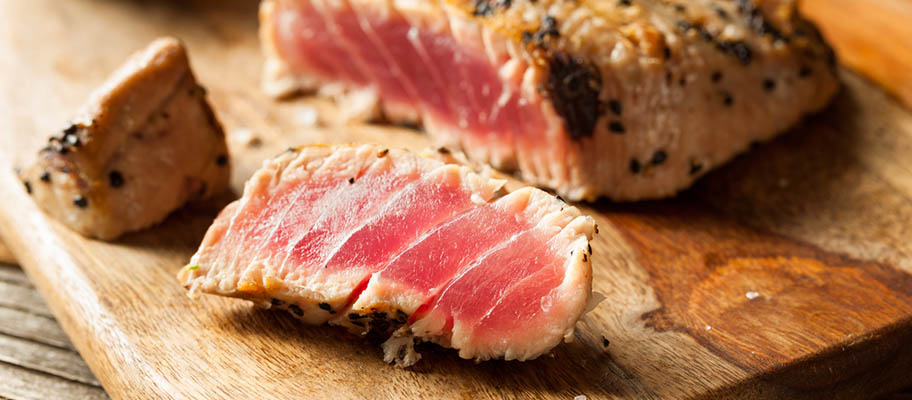If you can only choose one sustainable seafood species, make it tuna and here's why...
Following meteoric growth in demand and sales of MSC certified sustainable tuna over the last two years, Canada now occupies a top five rank globally in the adoption of sustainable tuna sourcing policies. These are some highlights from our first MSC Canada Tuna Report:
- 582% rise in the volume of MSC certified tuna sold from 2021/22 to 2023/24
- 99.5% of that volume is sold in cans
- Growth is led primarily by two MSC partners: Ocean’s and Clover Leaf
- 93.5 million cans of tuna bearing the MSC blue fish label were sold in 2023/24
- 81 canned tuna products with the MSC blue fish label are available to Canadians in all major grocers across the country
- 30 new MSC certified canned tuna products are expected to launch in 2025
There are many different tuna fisheries in the program, and you can find MSC certified sustainable options for every species.
TL;DR: if your tuna has the MSC blue fish label on it, it’s sustainable!
When you see the MSC blue fish label on a can of tuna, it means enough tuna are left in the ocean to continue reproducing, the tuna were caught in a way that minimizes environmental impact, and there is responsible oversight so any changes to the stock or the environment are monitored and can be responded to as needed.
How many types of tuna are there?
Tuna is a popular seafood choice around the world, especially in North America where it ranks among the top three most popular species year after year! It’s no wonder because tuna can be found in all the world’s oceans, and it can be eaten fresh or canned.
There are five main species of tuna: albacore, bigeye, bluefin, skipjack, and yellowfin. Each species has distinct characteristics. For example, bluefin tuna (Thunnus thunnus) is the largest species, averaging a length of six to 10 feet. Skipjack (Katsuwonus pelamis), on the other hand, is the smallest (and most abundant!) of the major commercial tuna species, growing up to around three feet in length. It’s also different than its siblings because, though closely related, it is not part of the same Thunnus genus.
Albacore tuna (Thunnus alalonga) are known for their long pectoral fins and are a versatile source of protein that can be found in sushi, fillets, or cans. Yellowfin tuna (Thunnus albacares) are named for their bright yellow fins and can be found fresh or tinned.
Did you know? A quarter of the world’s tuna, including half of the global population of skipjack tuna, comes from the Marshall Islands and nearby island nations in the central Pacific Ocean. Learn more about these small but mighty islands and their tuna connection.
Is tuna healthy?
According to the Seafood Nutrition Partnership, tuna is a source of high-quality protein that’s loaded with nutrients like vitamin D, selenium, iodine, and heart-healthy omega-3 fatty acids. Health benefits vary by species. For example, albacore is highest in omega-3s, but yellowtail as almost no fat, so it is lower in omega-3s.
Does tuna have a lot of mercury?
Mercury is a naturally occurring metal in the environment and is present in all species of fish. When small fish with low mercury levels get eaten by bigger fish, the amount of mercury increases (a process called biomagnification). For tuna, this means they can have higher levels of mercury because they’re at the top of the marine food chain.
Where can I find sustainable tuna?
MSC certified tuna is available in most grocery stores! Check the canned/preserved aisle, the frozen food section, and even the fresh fish counter for tuna carrying the MSC blue fish label.
How do I cook tuna?
The different species of tuna have different flavor profiles, so they can be prepared in many different ways. Here are a few ideas to get you started:
- Skipjack: Typically found in cans (and sometimes called 'chunk light' tuna), the flavorful, tender chunks are perfect for tuna melts and make a great high-protein addition to salads and pasta dishes.
- Albacore: This variety is found canned, fresh, and frozen, and can also be found in sushi. Tinned varieties make great tuna cakes, and lightly seared steaks make an excellent topping to a Nicoise salad.
- Yellowfin: The firm flesh and medium-to-mild flavor of yellowfin lends itself well to a quick sear on in the pan or a light grilling, but it's also great raw in poke bowls or sushi.
- Bigeye: The fattier flesh of bigeye makes it a great choice for sashimi, but it's also great grilled on skewers.
Easy tuna recipes

Featured{{item.Headline}}
{{item.Description}}
Discover more
A foodie's guide to sustainable tuna
Dive deeper into the flavor profiles and sustainability of all five tuna varieties.
Sustainable fishing in the Marshall Islands
Covering just over 70 square miles of land, this small island nation could more accurately be called a big ocean state. In their waters, and the waters of the other PNA nations, live more than a quarter of the world's tuna.
Tuna fishing in the Maldives
How ancient techniques and modern management are joining forces to safeguard skipjack – and the communities who rely on it.
Meiho: tuna fishing after the tsunami
How one man's vision brought a sustainable future to Japan's devastated Tōhoku region
Small islands, big opportunities
The island nations of the central Pacific don't have much land. But they have an awful lot of ocean - and a precious resource within it.

Read
Head to the MSC blog for the latest news about the MSC, sustainable seafood, and general ocean health.

Eat
Get inspired to eat more sustainable seafood with recipes and cooking tips, foodie guides, and more!

Shop
Check out this guide on how to find sustainable seafood with the MSC blue fish label.


e0335bf1811d4144a4589f6a7f4c1d80.jpg?Status=Master&sfvrsn=d9fbe5b7_3)

masaotaira.jpg?Status=Master&sfvrsn=721a9815_6)
